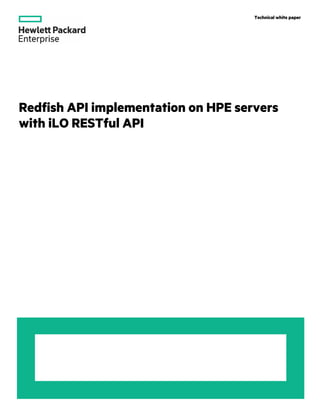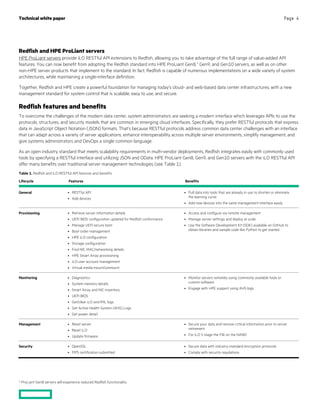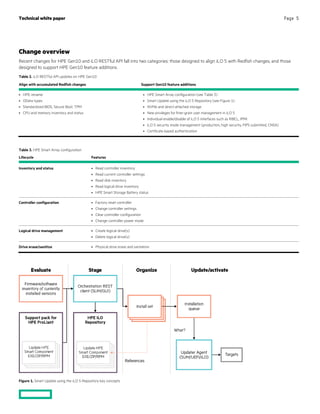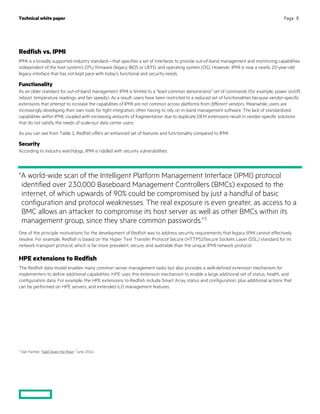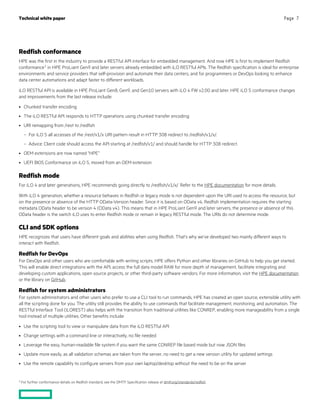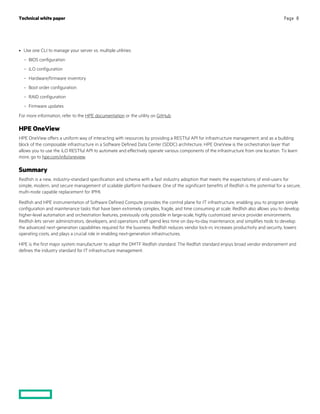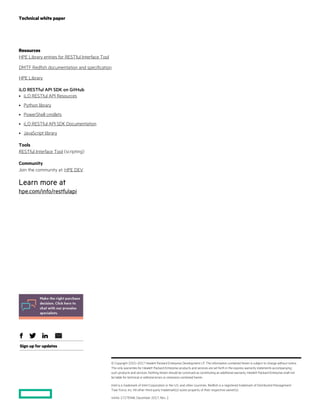Redfish is an open industry standard developed by DMTF to provide simple and secure management of modern scalable server hardware. HPE has implemented Redfish on ProLiant Gen8, Gen9 and Gen10 servers with iLO to provide enhanced remote management capabilities over traditional protocols like IPMI. Redfish offers benefits like RESTful interfaces, support for multiple server environments, simplified management at scale, and leveraging of commonly used tools. HPE extensions to Redfish enable additional status, health and configuration features for HPE servers that integrate with Redfish implementations on other vendors' products as well.
